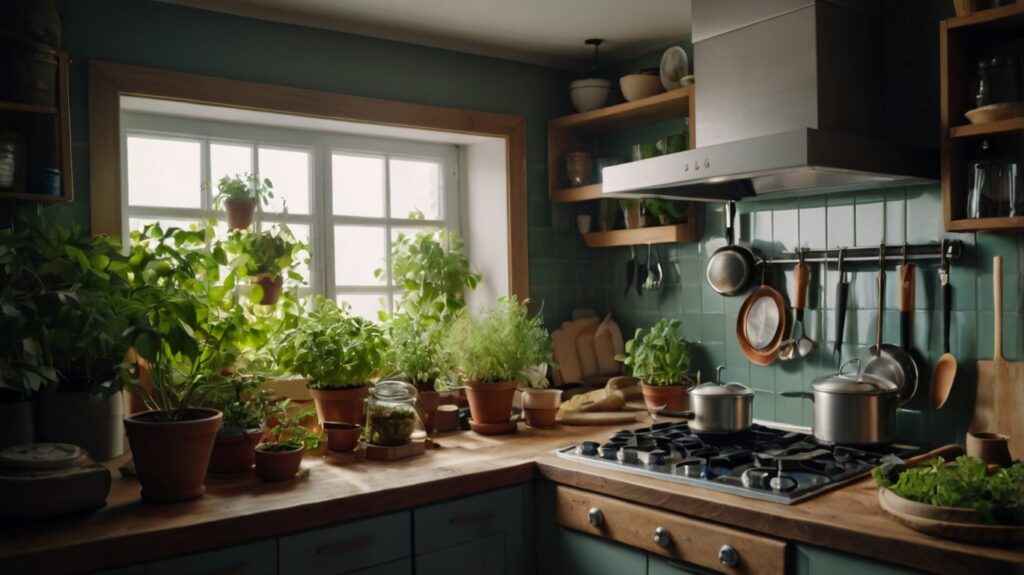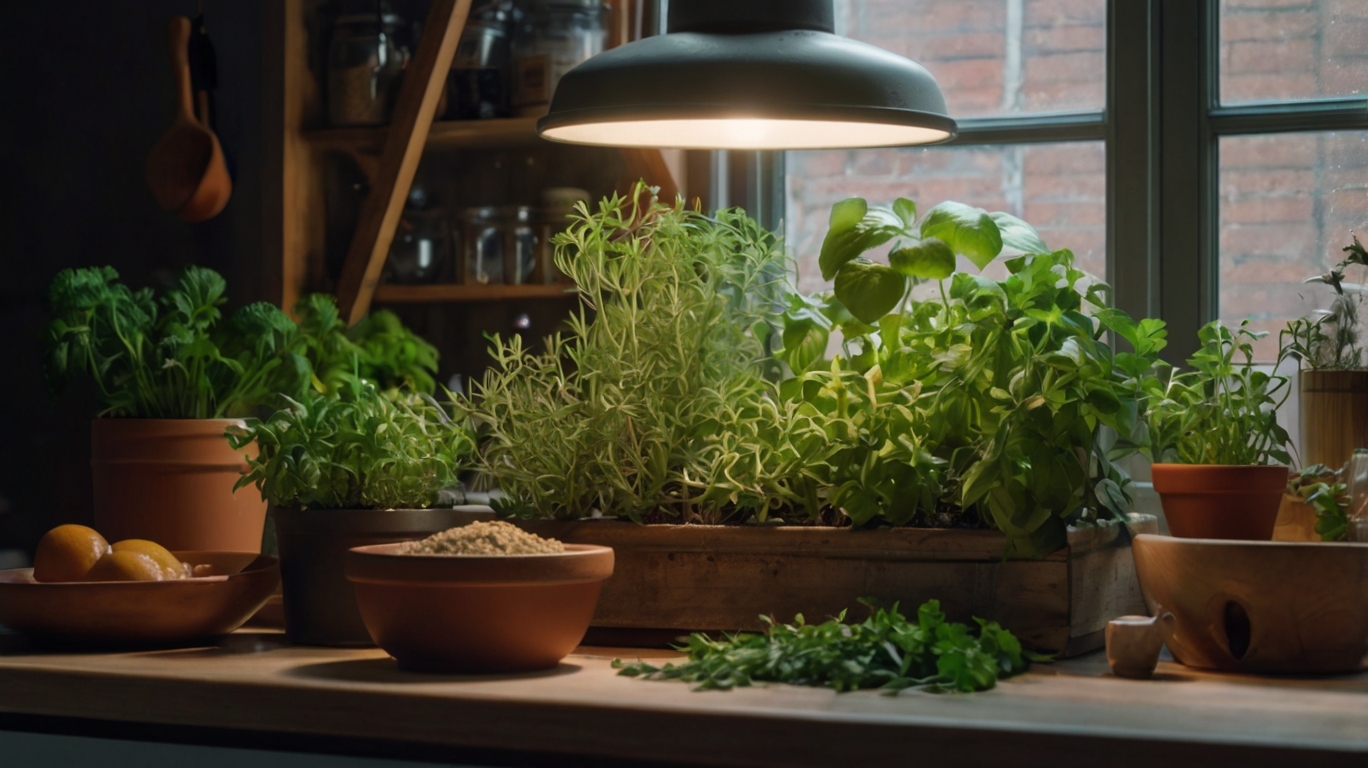Introduction
Imagine picking fresh basil, crisp parsley, or aromatic rosemary right from your kitchen, without a trip to the store. Creating a kitchen herb garden is easier than you might think, even if you’ve never grown a plant before. This article will guide you step by step to turn a corner of your home into a green oasis full of flavors and aromas. It’s practical, fun, sustainable, and adds a special touch to your recipes. Ready to get started?
Why Have a Kitchen Herb Garden?
A kitchen herb garden is more than just a decorative addition. It’s a way to bring freshness, save money, and keep ingredients at your fingertips. Here are some reasons to get excited:
- Unmatched freshness: Homegrown herbs have a more intense flavor than store-bought ones.
- Cost savings: Buying seedlings or seeds is cheaper than purchasing fresh herbs weekly.
- Sustainability: Growing your own reduces plastic packaging and transportation emissions.
- Well-being: Caring for plants is relaxing and rewarding as you watch your herbs thrive.
- Décor: Herb pots add charm and coziness to your kitchen.
If you’re a beginner, don’t worry! You don’t need a backyard or gardening expertise. With some light, water, and care, anyone can start.
Choosing the Best Herbs for Beginners
Not all herbs are equally beginner-friendly, especially for indoor growing. Here are some ideal choices for new gardeners, as they’re easy to care for and versatile in cooking:
- Basil: Grows quickly, loves sunlight, and is perfect for sauces, pizzas, and salads.
- Parsley: Hardy, adapts to various conditions, and pairs well with nearly everything.
- Chives: Easy to grow, space-efficient, and adds a fresh touch to many dishes.
- Mint: Super resilient, thrives in partial shade, and is great for teas and desserts.
- Rosemary: Durable, needs little water, and is ideal for meats and roasted dishes.
Tip: Start with 2 or 3 herbs to avoid feeling overwhelmed. As you gain confidence, you can try others like thyme or cilantro.
What You Need to Get Started
Setting up a kitchen herb garden is simple and requires minimal supplies. Here’s the basic checklist:
- Pots or containers: Choose pots with drainage holes (6-8 inches in diameter works for most herbs). You can also repurpose cans or jars, as long as you add drainage holes.
- Quality soil: Use potting mix or combine garden soil with sand for better drainage.
- Seeds or seedlings: Seedlings are easier for beginners since they’re ready to grow. Seeds are cheaper but require more patience.
- Natural light: Most herbs need at least 4-6 hours of sunlight daily. A south- or east-facing window is ideal.
- Watering can or spray bottle: To keep soil moist without overwatering.
- Fertilizer (optional): Organic compost, like worm castings, can boost growth.
If you live in a small apartment, no problem! A windowsill or shelf near a light source is enough.

Step-by-Step Guide to Creating Your Herb Garden
Now that you know the basics, let’s dive into the steps to set up your garden:
1. Choose the Perfect Spot
Find a kitchen area with natural light for a few hours each day. Herbs like basil and rosemary love sun, while mint and parsley tolerate partial shade. Avoid spots with drafts or near the stove, as heat can harm plants.
2. Prepare Your Pots
- Place pebbles or broken pottery at the bottom of the pot to aid drainage.
- Fill with soil mix, leaving about 2 cm from the top.
- For seeds, follow packet instructions (usually plant them 0.5 cm deep). For seedlings, dig a small hole in the center, place the plant, and cover the roots with soil.
3. Plant with Care
- For seedlings: Gently remove the plant from its original container, keeping roots intact, and place it in the pot.
- For seeds: Scatter a few seeds and cover lightly with soil. Keep the soil moist until they sprout.
- Tip: Avoid planting different herbs in the same pot, as each has unique water and light needs.
4. Water Moderately
Most herbs like moist but not soggy soil. Water when the topsoil feels dry to the touch. A quick trick: lift the pot—if it feels very light, it’s time to water.
5. Maintain Your Garden
- Pruning: Trim leaves regularly to encourage growth. Never remove more than 1/3 of the plant at once.
- Fertilizing: Every 1-2 months, apply organic fertilizer or diluted liquid fertilizer.
- Pest control: Watch for aphids or fungi. A solution of water and mild soap can handle minor issues.
Tips for Keeping Your Garden Thriving
- Rotate pots: Turn pots every few days so all sides of the plant get light.
- Avoid overwatering: More plants die from too much water than too little.
- Observe your plants: Yellow leaves may mean overwatering; wilting leaves could indicate too little water or light.
- Harvest carefully: Use scissors to cut leaves and avoid pulling by hand to prevent plant damage.
How to Use Your Herbs in Cooking
With your garden flourishing, it’s time to enjoy the fruits of your labor! Here are some ways to use your fresh herbs:
- Basil: Make homemade pesto, add to caprese salads, or use in tomato sauces.
- Parsley: Sprinkle over soups, roasted potatoes, or mix into salad dressings.
- Chives: Perfect for omelets, broths, or as a finishing touch on Asian dishes.
- Mint: Try it in teas, juices, desserts, or savory dishes like tabbouleh.
- Rosemary: Great for seasoning meats, homemade breads, or rustic potatoes.
Tip: Always harvest the outermost, mature leaves, leaving newer ones to keep growing.
Troubleshooting Common Issues
Even beginners face challenges. Here are solutions to common problems:
- Yellowing leaves: Likely overwatering. Reduce watering and check drainage.
- Slow growth: Could be insufficient light or nutrients. Move the pot to a sunnier spot or add fertilizer.
- Pests: Aphids or whiteflies may appear. Use a water and mild soap solution or remove them by hand.
- Wilting plants: Ensure they’re getting enough water and that the soil drains well.
Benefits Beyond the Kitchen
Beyond enhancing your meals, a kitchen herb garden offers other amazing perks:
- Mental health: Tending to plants reduces stress and boosts well-being.
- Sustainability: You lower your carbon footprint by avoiding packaged, transported herbs.
- Education: It’s a fun way to teach kids about nature and where food comes from.

Lovart’s AI-powered design approach is a game-changer for creatives who want smart suggestions and seamless integration with tools like Figma. Exciting to see AI meet traditional design! Lovart